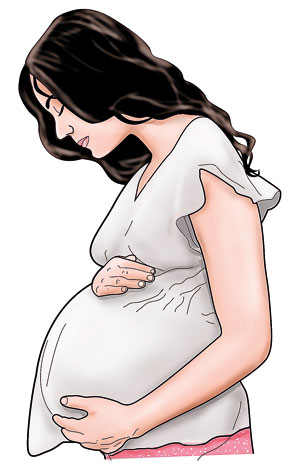Have yourself a healthy baby

By Kumudini Hettiarachchi
Many birth defects are preventable and those living with birth defects can be supported to reach their optimal status, stresses Dr. Kapila Jayaratne of the Family Health Bureau
Hope and joy are the harbingers of a birth, with the parents and relatives thinking of the future with great expectation.
The preparation for a baby’s birth should not start at the beginning of the pregnancy but much before, MediScene learns.
This would help in warding off birth defects, says Dr. Kapila Jayaratne, the Health Ministry’s National Programme Manager for Maternal & Child Morbidity and Mortality Surveillance at the Family Health Bureau.
Birth defects could be caused by genetic or environmental factors or both, MediScene learns.
Reiterating that a majority of the birth defects are preventable, Dr. Jayaratne explains that they are structural or functional anomalies of organs, systems or parts of the body that occur during intrauterine (within the uterus or womb) life. They could be evident before birth, at birth or in later life.
He urges that the modifiable risk factors for birth defects in a child, should be taken into account seriously so as to prevent them.
These factors are:
- Nutritional factors – which include the lack of folic acid
- Advanced age of the mother (over 35 years) and now it is believed that the father’s age also matters
- Existing diseases in the mother of which well-known are diabetes and hypertension which should be kept under control
- Maternal obesity
- Infectious organisms – such as chicken pox and rubella (viral diseases), syphilis (a bacterial infection spread by sexual contact) and toxoplasmosis (a parasitic infection caused by eating under-cooked contaminated meat or from exposure to infected cat faeces)
- Certain medications – such as anti-epileptic and anti-psychotic drugs
- Alcohol, substance abuse and smoking
- Being exposed to radiation
Some of these risk factors should be avoided before you become pregnant. In the case of diseases such as diabetes and medication to keep some illnesses under control, medical advice should be sought before the beginning of the pregnancy, is his plea to mothers-to-be.
This would be primary prevention, while secondary prevention would come during the pregnancy itself where for some birth defects surgical correction could take place even in-utero (within the womb), as about 80% of the structural birth defects would be seen on the anomaly scan which is done at 18-20 weeks and also after birth, it is understood.
Dr. Jayaratne says that tertiary measures would be to minimize the effects of the birth defect on the life of the child/adult for optimum living through therapy and rehabilitation,
The statistics which need to be heeded are:
- 16 babies are born with a birth defect every day in Sri Lanka of whom 2 would die
- 200 children are born with a serious structural birth defect every year and suffer lifelong
- Some of the birth defects are:
- Congenital heart defects
- Neural tube defects including spina bifida
- Cleft lip or palate, limb deformation, clubfoot etc
- Down syndrome
- Congenital rubella syndrome
- Hypothyroidism
- Thalassaemia
Giving an insight into the ground reality, he says that around 328,000 babies are born alive each year in Sri Lanka, of whom about 5,800 have a birth defect.
“Of those 5,800 babies, 30% (1,740) have a serious birth defect which affects their day-to-day lives and between 600-700 die before their first birthday. As such, birth defects are the second leading cause of infant mortality (death). This is while of 1,900 babies who die in-utero (stillbirths) after 28 weeks of gestation, around 35% succumb due to a birth defect,” says Dr. Jayaratne.
He stresses that many birth defects are preventable and those living with birth defects can be supported to reach their optimal status. “We must ensure that children with birth defects are not
left behind.”


